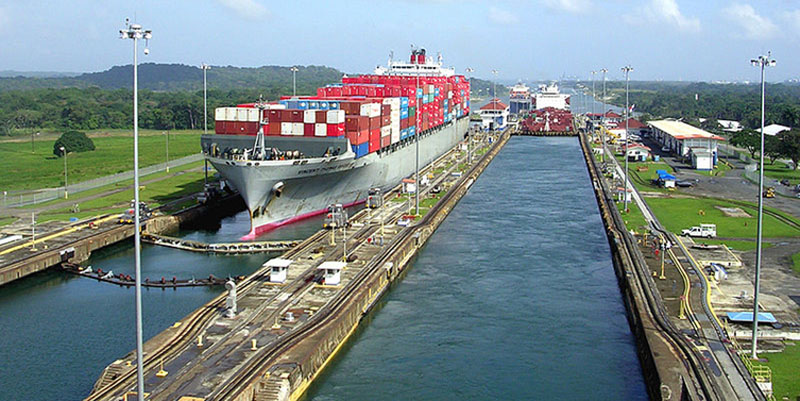Today, the Panama Canal faces a series of potential long-term issues thanks to diminishing
rainwater and other factors. What are the authorities doing to prevent them?
We’ve all heard about what happened at the Suez Canal in late March when a massive container vessel ran aground, setting the global shipping scene back by almost a week. It’s not an issue that anyone expects to encounter with the Panama Canal, which takes in approximately 4% of global trade by sea.
Thanks to the pandemic, there has been a boom in maritime trade which has brought more activity to the canal – an occurrence that often causes congestion within the busiest global shipping routes. In which case, an incident like that in the Suez happening in Panama can seriously hurt both exporters and consumers throughout the world.
However, a blockage of ships may be the least of the problems in the Panama Canal. More pressing issues within the area need to be addressed urgently, particularly those involving climate change.
Water nowhere and everywhere
Between severe droughts that force ships to reduce their cargo to keep vessels from running aground to massive storms that threaten to make dams and locks spill over, water – a lack or disastrously proportioned surplus thereof – is what threatens the passage of ships through the 50-mile canal.
Panama may be the country that ranks fifth in terms of heavy rainfall, but the supply of freshwater has been anything but steady in recent years. As a result, canal management has had to deal with more issues over the past decade than much of the canal’s history since 1914.
This is potentially ruinous as the canal requires a steady supply of rainwater to fill the reservoirs and artificial lakes that, in turn, fill its locks. Also, the way fresh water is being diverted to residential and agricultural areas has also taken its toll.
Even more disturbing is how neighboring rainforests have diminished in size over time. Their ability to serve as a catch-basin or sponge for excess water has considerably lessened – and this tends to spell disaster during drier months.
Growing urbanisation has contributed to the reduction of forested land within the area, leading to intense flooding during the storm season. While authorities have reforested nearly 20,000 acres across the watershed, scientists advise that this simply isn’t enough.
Four of the past seven years were marked by intense droughts – the driest the canal has been since 1950. Conversely, the area is also being hit by mammoth storms and intensely destructive hurricanes.
A working plan underway
The Panama Canal Authority is currently working on a $2 billion infrastructure plan geared towards managing preserving freshwater reserves. Set for completion in 2028, the projects under the plan include constructing new dams and reservoirs, using grey water (treated sewage water), identifying alternative sources of fresh water, and even using desalinated seawater.
Other countries utilize large reservoirs or river transfers to alleviate water shortages. Yet, the Panama initiative is considered the largest project of its kind anywhere in the world.
Hopefully, it could make it more resilient against the challenges posed by the changing climate.















